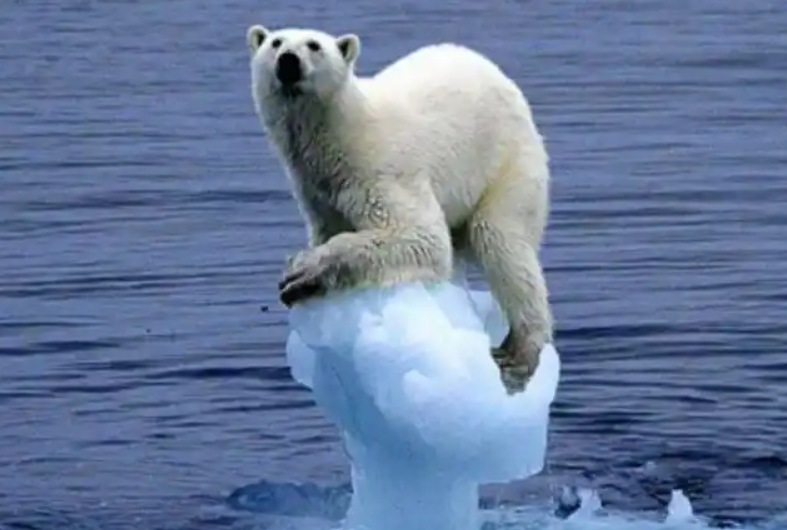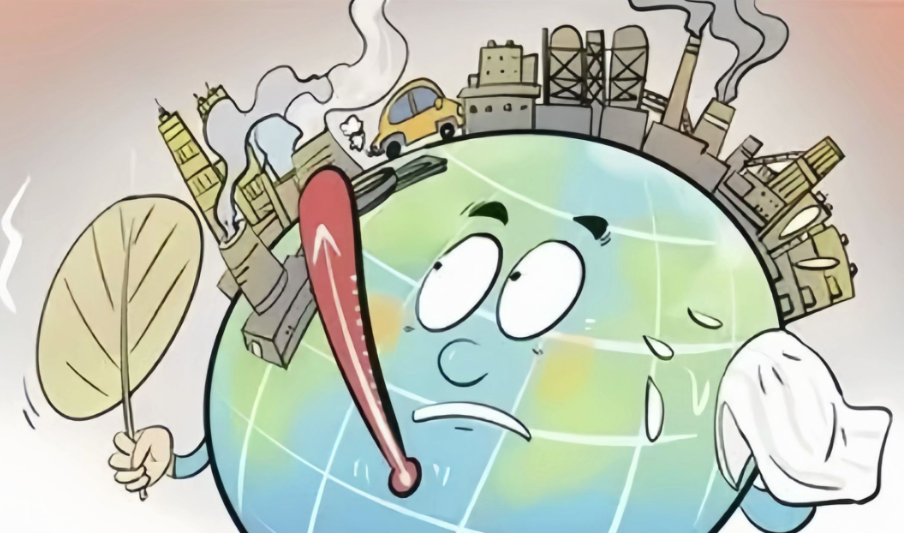
Global Greenhouse Effect
The greenhouse effect, commonly known as the "atmospheric warming effect," is the warming of the Earth's surface due to the presence of certain gases in the atmosphere that trap heat. Shortwave radiation from the sun reaches the Earth's surface through the atmosphere, warming the planet. The Earth's surface then emits longwave radiation heat back into the atmosphere, which is easily absorbed by greenhouse gases such as carbon dioxide (CO2), methane (CH4), nitrous oxide (N2O), chlorofluorocarbons (CFCs), and ozone (O3). This process is similar to the warming effect in a glass greenhouse, hence the name greenhouse effect.

These greenhouse gases have always existed in the atmosphere, and the greenhouse effect has been present since the Earth's formation. Scientists refer to this natural phenomenon as the "natural greenhouse effect." Without this natural greenhouse effect, the temperature differences between seasons and day and night would be much greater, and the average surface temperature of the Earth would be a frigid -18°C instead of the current 15°C. If the Earth were that cold, human life would be unsustainable, and human civilization as we know it would not exist. Therefore, the natural greenhouse effect is of great significance to the development of human civilization. Given this, why do scientists now consider the greenhouse effect to be a major global environmental issue?

Since the Industrial Revolution, human activities have released large amounts of greenhouse gases, causing a rapid increase in their concentration in the atmosphere. This has led to a growing greenhouse effect, which scientists call the "enhanced greenhouse effect." This is the concern of global environmental scientists. As the atmospheric greenhouse effect intensifies, the global average temperature will rise year by year, ultimately leading to global warming and a series of unpredictable global climate issues.
How have human activities caused a rapid increase in the concentration of greenhouse gases in the atmosphere? After entering the industrial age, humans have massively exploited and used underground mineral energy sources. In the past 30 years, the burning of fossil fuels such as coal, oil, and natural gas has released about 5 billion tons of CO2 annually, which is shocking. Another major reason for the increase in atmospheric CO2 is the large-scale deforestation for fuel. Each square meter of forest can absorb about 1.5 kg of CO2, thereby reducing the greenhouse effect. However, deforestation has destructively turned the CO2 absorption "reservoir" into a CO2 emission "source." According to the Food and Agriculture Organization of the United Nations, about 1.2 billion cubic meters of trees are cut down and burned annually. The burning of these trees produces a large amount of CO2, increasing the atmospheric CO2 concentration by at least 0.4 ppm each year. The increase in atmospheric CH4 is also very rapid, mainly due to the expansion of global rice cultivation areas and the rapid development of livestock farming. The intestines, feces, swampy wetlands, flooded rice paddies, and fossil fuel combustion are all significant sources of atmospheric CH4. In addition, humans also release CH4 into the atmosphere during the extraction of natural gas and coal. The increase in atmospheric N2O is mainly due to the use of chemical nitrogen fertilizers in agriculture and the increase in animal waste, as well as the increase in fossil fuel combustion and biomass burning. N2O in the atmosphere not only has a greenhouse effect but can also damage the ozone layer, increasing the intensity of ultraviolet radiation from the sun reaching the Earth's surface, which can harm the skin.

The International Climate Change Economics Report indicates that if humans continue their current lifestyle, there is a 50% chance that the global average temperature will rise by 4°C by 2100. If the global temperature rises by 4°C, the glaciers at the Earth's poles will melt, causing sea levels to rise. More than 40 island nations worldwide will face the danger of being submerged. In addition, the world's most populous coastal cities will suffer the same fate, with over 60% of the world's population living there. If the global temperature rises by 4°C, the lives of tens of millions of people will be at risk, potentially causing widespread ecological imbalance, leading to large-scale migration and conflict.
So far, we have not found the most effective solutions, but we should do everything possible to reduce greenhouse gas emissions and save our Earth and humanity to the greatest extent. However, the key issue is to find alternative energy sources to replace fossil fuels, such as solar energy, nuclear energy, geothermal energy, hydrogen energy, and renewable energy. This will require tremendous human effort and the application of various advanced technological means, which is a fact we must face.